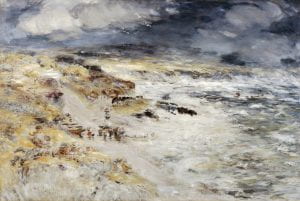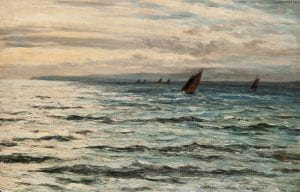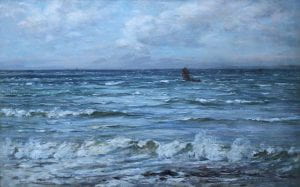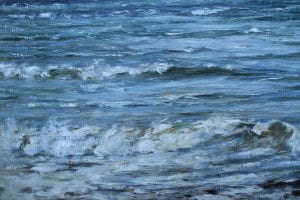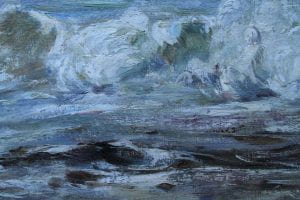Joseph Henderson was 38 years of age when he painted this canvas, titled ‘A Northerly Breeze’. It is a portrait of the Scottish sea, its waves inundating the space to marginalise the figures of the women and the ship.
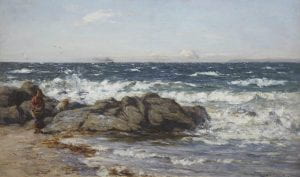
There are myriad writings, many of them challenging and scholarly, that explore the apparent distinctiveness of Scottish paintings. Whilst reviewing many images of the sea for clues about the genesis and form of any distinctive Scottishness, I realised that one contextual feature was always consistent for the painters, irrespective of the year, the local and national background, their domestic circumstances and personal histories. This was the land itself, that piece of the Earth’s surface that we currently call Scotland.
Any painter who faced outwards from a Scottish foreshore would experience the same Scottish sea. To explore the distinctiveness of such portraits as Henderson’s, one must examine the fundamentals of their Geography – the space, place, and location of what the artist was responding to. The concepts of space and place have been extensively discussed by cultural geographers such as Doreen Massey, Yi-Fu Tuan, Raymond Williams and Tim Ingold. All these writers emphasise that spatiality has been ignored in traditional social history, which instead stresses history and time. It will be fascinating to apply their understandings to the analysis of Scottish paintings.
